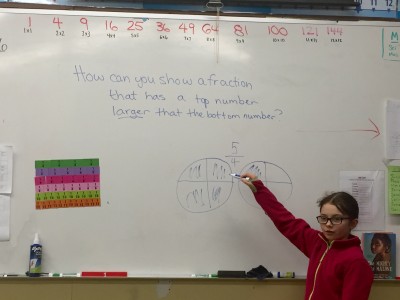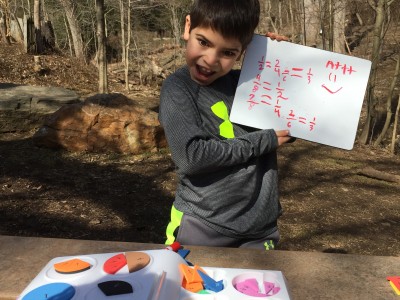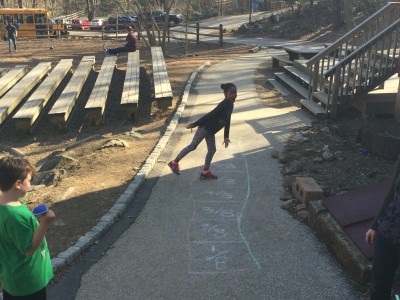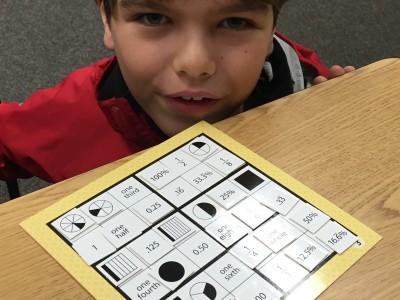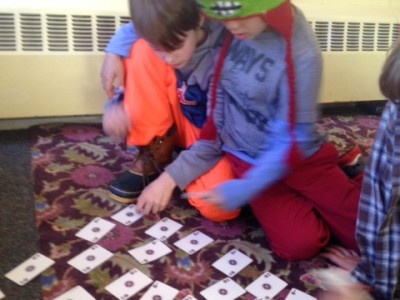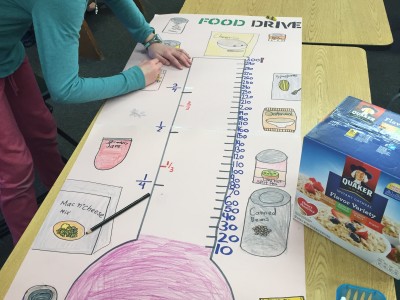Miquon Math Today
What does it look like to be a mathematician at Miquon? In our room, it takes many forms. The children can be found building skills like number sense, abstract and spatial reasoning, and problem solving throughout the day. Morning work might include math journaling: taking one question to puzzle over, solve, and most importantly explain one’s thinking in writing and/or drawings. Circle time discussions may include questions about why a Leap Day is needed, or how you can test a number to see if it is prime. Writing and talking about mathematical ideas uses a different part of the brain than pencil and paper work, as does the use of manipulatives for concrete representations of abstract numerical ideas. The variety of approaches helps a wide range of learners to experience both successful moments and stretching challenges.
As they turn ten years old, many children’s brains are developing the ability to move from concrete to abstract thinking, and to apply ideas learned in one context to another. This month we saw connections made as children built with fraction tiles or hung fractions in order on a number clothesline, and then solved problems on whiteboards or on paper using their newly acquired understanding. In other activities we used our whole bodies for movement in play that incorporated factors and multiples, division of groups, and fraction box hopscotch.
Math games are another common way for children to see themselves as mathematicians at Miquon. The natural incentive to grasp an idea quickly for the enjoyment of a card game or board game with friends inspires children to take concepts learned and connect them in new ways. Game play can be easily modified for a range of learning styles and skill levels.
Our approach to mathematical problem solving also includes real world application and work wherever possible. In the 5/6 our friends are applying the computation skills each week as they total up the school’s lunch orders. In our room we have incorporated our study of economic justice and resource use to our developing knowledge of math, to see how people apply division every day to decisions about how money, land, or food are shared. This month we have launched a food drive for Philabundance and will track the number of items collected towards our goal with a fraction thermometer. Children write their own word problems connected to the social issues they are studying together in our theme time.
Together our children are building a sense of themselves as flexible thinkers and growing mathematicians. By focusing on positive experiences of puzzles, play, and number challenges, alongside real word applications, we hope they will continue to see themselves as capable problem solvers and resist the trap of the “I’m bad at math” labels that can creep in as adolescence approaches, especially for girls. At Miquon we hope to keep the joy in learning that they felt in the kindergarten years alive into upper elementary grades, even as they rise to meet greater intellectual challenges as they grow.
